Squares are essential woodworking tools simply because 90-degree angles are everywhere in stock preparation, furniture, cabinetry, machinery and hand tools. Here’s a compendium of squares to help you choose what you need.
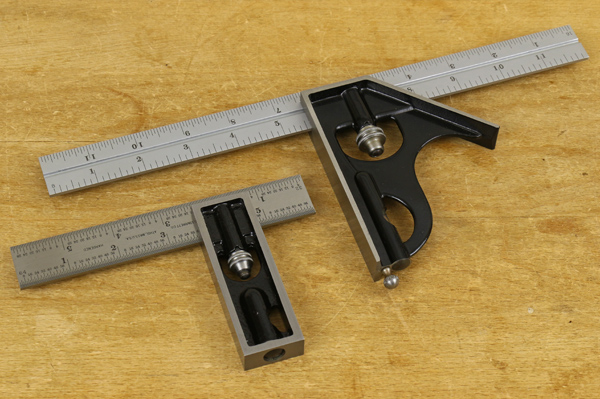
Combination square
The square to have if you could have only one and the first one to buy is the remarkably versatile 12″ combination square. Because the head can be set anywhere along the length of the blade, it can be configured in different sizes and for inside or outside measurement. The standard head also measures 45-degree angles and has a scribing point and spirit level. Furthermore, blades from 4″ to 24″ can be fit to the same head, and center-finding and protractor heads are available.
Also very handy is the smaller 6″ version with a straight head, shown next to its big brother in the photo above. Properly cared for, these are lifetime tools so if you can afford the best, it’s worth it. Starrett makes combination squares unequaled in mechanical function and accuracy. I suggest choose a model with a hardened steel head and blade.
A combo square functions also as a depth gauge, ruler, straightedge, step gauge, and, as shown below, a marking gauge. Slide the head along the edge of the wood and hold a pencil against the end of the blade with the slot side up.
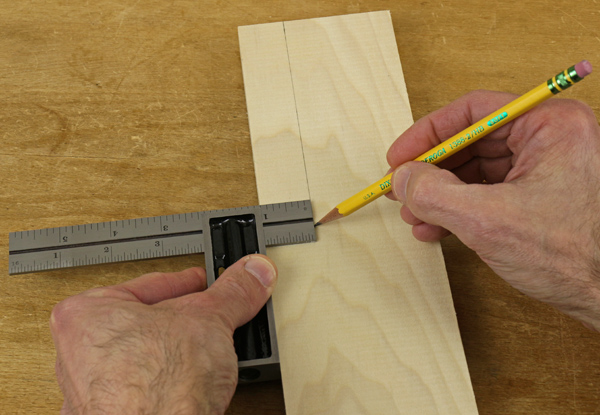
Try to be square
For its sheer simplicity and convenience, the try square, with its fixed blade, is the go-to square for many woodworkers. The stock can be wood, usually faced with metal, or entirely metal. A good all round size has a 6″ to 8″ blade, typically without gradations. My old but very accurate Stanley try square, seen below, is the square I reach for more than any other, despite its superfluous gradations. Pictured next to it is a more traditional-looking but larger try square.
A quality modern try square should be accurate on all inside and outside faces so all four combinations of edges produce accurate measurements.
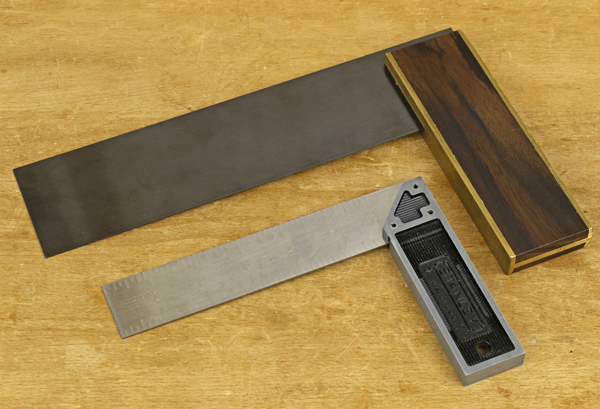
Different squares that are cool too
Layout occasionally calls for a completely flat square for inside markings. A good quality plastic drafting square is an economical but very effective solution. Available in a large range of sizes, these are surprisingly accurate.
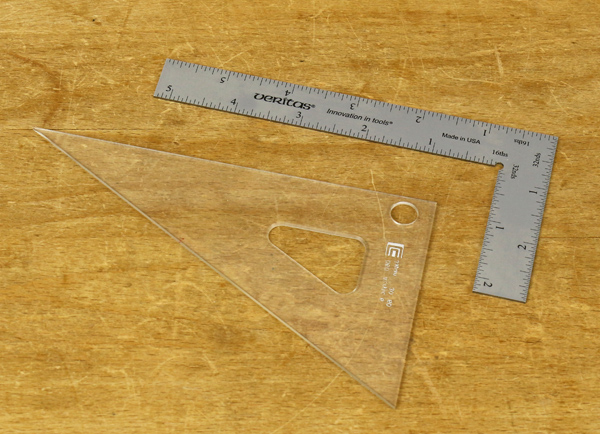
Pictured above, next to the drafting square, is one of the most used tools in my shop. It functions as a regular rule, hook rule, and square. The L-shape makes it especially handy for measuring bit and blade heights. I use it much more often than my regular straight 6″ rule.
Below, the two little squares with very narrow blades are useful for testing square in tight quarters, such as between the sawn tails in dovetail joints. I made the one on the left many years ago. Much later, I acquired the metal one, an adjustable model by Starrett, as a luxury but it gets much more use than I expected.
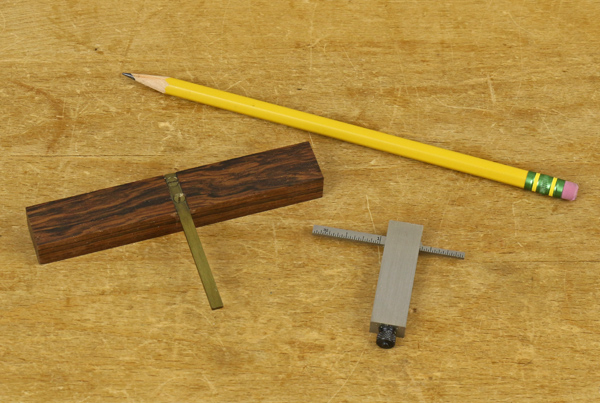
The saddle square, pictured below, expedites accurately marking a squared line all around dressed stock. It is not a true must-have but it certainly is wonderfully handy to speed up this otherwise tedious marking task and to decrease errors.

Hip tips on using squares
When judging square on the outside of stock or a structure, be certain to hold the stock firmly against the work piece. As your attention is drawn to watching if the blade is meeting the wood, it is very easy to neglect the feeling of keeping the stock tight.
Woodworking layout often involves marking a squared line at a specific location designated by a small mark. The best procedure is to firmly place the pencil or marking knife on the designated mark, then gently slide the square up to the pencil or knife. This eliminates errors caused by the thickness of the pencil lead or misplacing the square relative to the mark. As when assessing square, remember to hold the stock firmly to the work piece as you mark the line against the blade.
For very precise assessment of square, place the square on the work as it is held in front of a diffuse background light. Even the tiniest gap between the blade of the square and the work will be visible as the light shows through it.
Getting square
When building a set of tools, I suggest start with a 12″ combination square and soon add a medium size try square. It pays to have at least one highly accurate, top quality square, such as a Starrett, to serve as a reference when setting up machinery and assessing precision hand tools such as a shoulder plane. Treat it with care.

Share tips, start a discussion or ask one of our experts or other students a question.
No Responses to “Cool Squares: Woodworking Squares to Add to Your Toolkit”